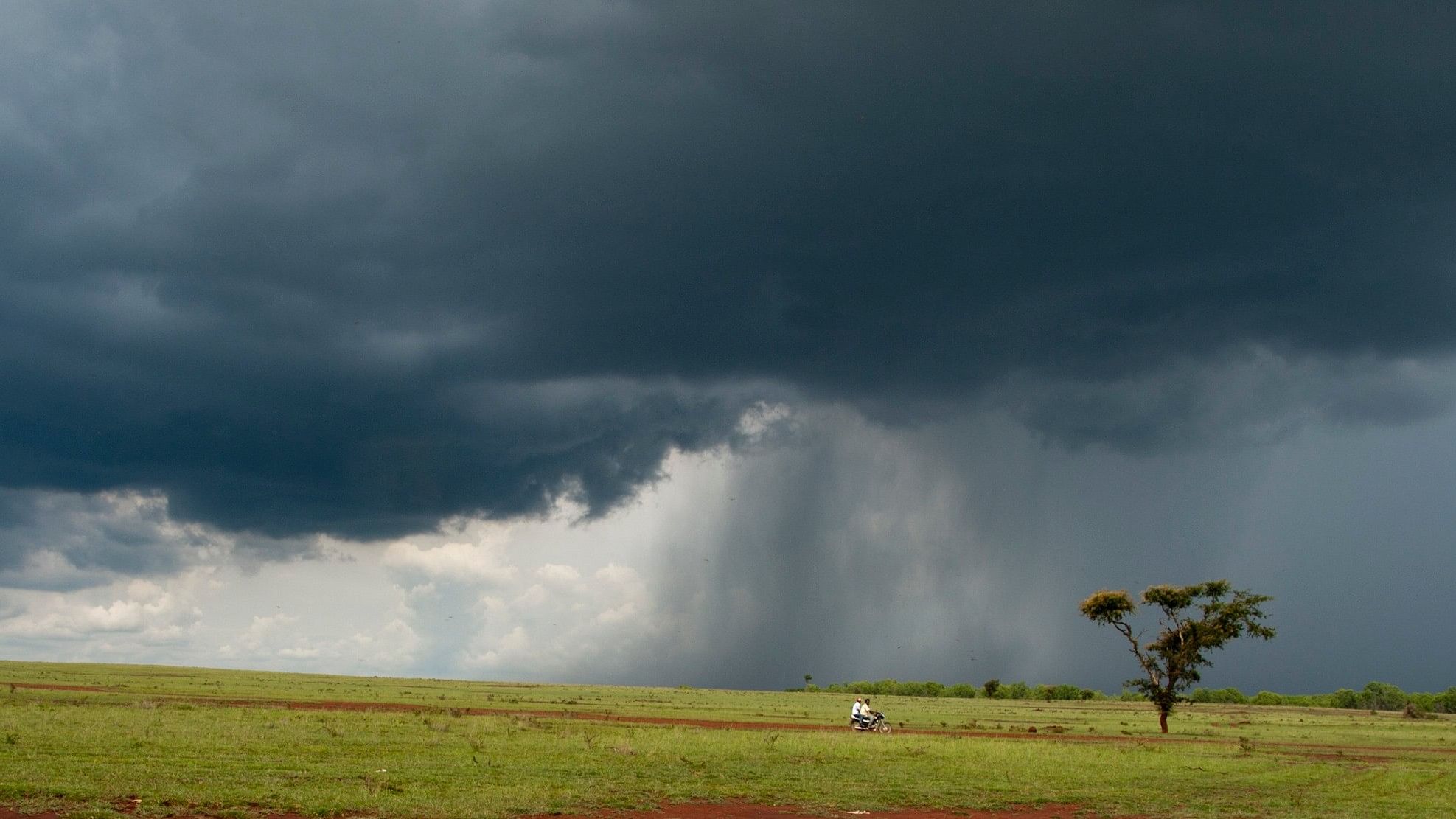
A scenic view of the verdant grassland - the last standing eco-system around Bengaluru, at Hesaraghatta in Bengaluru.
Credit: Mahesh Bhat
The recent reporting of a new dung beetle species in Hesaraghatta grasslands has brought the biodiversity hotspot into the limelight again. Just last November, researchers had discovered a flowering legume plant endemic to the habitat.
The last remaining piece of grassland in Bengaluru is near Hesaraghatta. There has been a long-standing demand from citizens and academics to declare the 345-acre grassland, shrublands, and wetlands surrounding the Hesaraghatta lake as a conservation reserve. Some degree of protection is required to shield this 5,000-acre ecosystem from burgeoning human activities in the region, says ecologist K S Seshadri.
Campaign
Photographer and conservationist Mahesh Bhat had initiated the proposal for a conservation reserve, drafting it in collaboration with conservationist Ramki Srinivasan, ornithologist M B Krishna, and Seshadri. It was submitted to the Karnataka Forest Department in 2013. The department carried out a survey and fixed the boundaries of the proposed reserve. After a nod from the animal husbandry department, it was placed before the State Board for Wildlife in 2021.
It was rejected allegedly due to political interference, sparking protests in the city. Following PILs, the high court set aside that rejection the next year. In a subsequent meeting, then-chief minister Basavaraj Bommai, who was the chairman of the Board, directed the proposal to be discussed with local communities. That was carried out but the proposal hasn’t come up for discussion since.
Potential
It was entomologists from the Ashoka Trust for Research in Ecology and the Environment (ATREE) who discovered the new dung beetle, Onitis Visthara. Priyadarsanan Dharma Rajan, who leads the insect lab at ATREE, says Hesaraghatta is home to approximately 20 per cent of India’s dung beetle species. Dung beetles are a sign of co-existence. He explains, “These grasslands are a grazing ground for the cattle of local herding communities. The dung beetles break down the dung and return nutrients to the soil.”
It is reported that Hesaraghatta has 39 native plant species, 10 mammals, five reptiles, 264 birds, 13 amphibians, three spiders and 14 butterflies. Rare sightings of the leopard, slender loris, lesser florican (a bird seen here after 100 years) and the lilac silverline butterfly (seen in Bengaluru after 103 years) have been recorded.
Bird watcher Ashwin Viswanathan feels the dung beetle discovery at Hesaraghatta takes the conservation discourse beyond the avian species. M Jadegowda, professor at College of forestry, adds: “The grasslands sequester more carbon than other ecosystems do. They reduce soil erosion. They produce oxygen at a faster rate. They facilitate pollination, help increase water table, and provide habitat for amphibians, birds and mammals.”
Moreover, Hesaraghatta can become Bengaluru’s future answer to water security as it was in the past, says Seshadri. And coming back to biodiversity, Seshadri recalls entomologist B R Subba Rao who discovered Neodusmetia sangwani in Hesaraghatta. A parasitic wasp, it became a popular biological pest control.